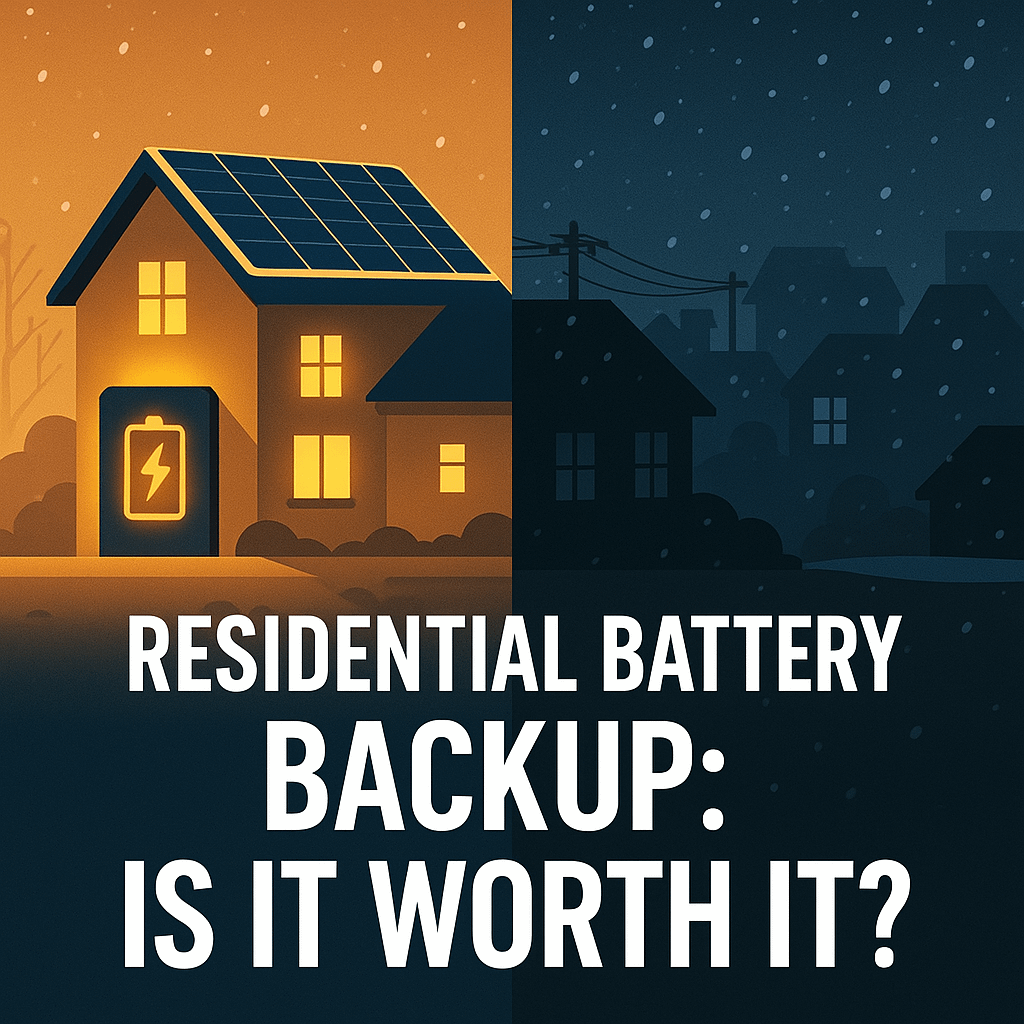What's the wost that could happen?
So you’re ready to turn your dumb roof into a power source. You begin to do a little research and quickly realize this is not at all like buying a dishwasher.
For starters, according to Forbes Home, in America you will pay somewhere in the range of $8,500 to $30,500 for a residential installation. With such a wide ranging, high price tag it’s an attractive business for grifters who will peddle high interest loans, complex leasing agreements, or sell you more solar panels than you need.
Then, you’re likely going to place your panels on your roof, which means someone, hopefully someone skilled, is going to put dozens of holes in your roof. What’s the worst that can happen, right?
When you need a dishwasher, you know where to go. You likely go to your local electronics or hardware store, or their online equivalent, and find a broad selection of trusted brands along with easy access to thousands of customer testimonials. But where do you go to find solar panels? Who can you trust to install them on your roof? And how do you even know how many you need?!
In this article, we’ll help you sort through these concerns so you can make a confident and informed choice when you take advantage of your roof real estate and turn it into a powerhouse.
How Old is Your Roof?
Now, assuming you plan to install your solar panels on your roof, the suitability of that roof should be your very first consideration. How old is your roof? If it has been replaced within the last 5 years, then great! But what if it’s older or in need of repair?
If you plan to replace your roof in the near future or are planning any major maintenance on it, then you should wait until that work is completed before going solar. If you don’t wait, then when it comes time for that roof replacement or for those repairs, you’ll be paying contractors to remove your solar panels and mounting equipment, storing them until your roof repair is complete, at which point you get to pay to have your panels installed once again. Don’t do that.
But if you are in the market for a new roof, this is an excellent time to consider solar, and in particular, solar integrated roofing products. Look, you’re already investing ten thousand dollars in a new roof, perhaps you should consider a roofing product with solar power generation built into it? While there are high end options from companies like Tesla, roofing industry stalwart GAF Roofing offers a more budget friendly product that looks and installs like a traditional asphalt shingle, but includes smart shingles that generate electricity. Click here to learn more about integrated solar.
A QUALITY CONTRACTOR with a verifiable track record IS KEY
Let’s now presume your roof is relatively new and ready for solar. Will the mounting equipment damage your new roof? Not if they’re installed correctly. In fact, by blocking damaging solar radiation and protecting your roof from the elements, solar panels can even extend the life of your roof. But putting holes in your roof certainly involves some risk, and just how much risk is involved largely depends on the quality of the contractor you hire. But what are some specific concerns to be aware of?

A Leaky Roof
Mounting solar panels to your roof will almost certainly require you put holes in it. And those holes can create pathways for water to penetrate your roof and cause damage below. Over time this could become a disaster. A quality contractor will be able to explain to you how their system prevents water intrusion. Ask them to.
Warranty
This one is big. Whoever you choose, make sure they are licensed, bonded and insured. And make sure your purchase includes a robust warranty… in writing. No warranty, no deal. Your warranty will cover workmanship and equipment, all over different time horizons.
Workmanship
Find a contractor that will stand by their work. If a workmanship warranty isn’t offered, consider that a giant red flag. A reputable contractor will offer at least 5 if not 10 years as a warranty on the quality of their work.
Power Generation Quotas
Any residential solar company worth their silicon will provide you a report, early in the design process, which will tell you how much power your system will generate in a given year. This is not a guess, it’s a science, and it should be guaranteed. There are numerous tools available to provide an accurate annualized power generation estimate on any given roof. Some data needed for such an estimate is: the geographical location of the roof, the number of solar panels in your design, their specs, the configuration of the panels, your roof pitch and orientation and a shade profile from any large trees or other obstructions that will block sun exposure. Once your contractor has the needed information they will apply a safety margin and guarantee you how much power your specific system will generate every year on your roof. Your only part of the bargain is to keep the panels clean. Other than that, their estimate will hold, including an allowance for solar panel degradation of about one half to one percent every year.
Solar Panels
Solar panels should have at least a 20 year warranty. And that doesn’t mean that the panels are likely to be useless after 20 years. Rather, they are guaranteed to maintain at least 80% of their rated generation capacity after 20 years of use.
Power Inverters
In a residential system, power inverters take the direct current (DC) power generated by your solar panels and invert it to produce a clean alternating current (AC) waveform. This will likely be your first big ticket item to fail, with a typical warranty coverage period of 5 to 10 years and a typical lifespan ranging from 10-15 and sometimes upwards of 20 years for a quality inverter.
Power System Monitoring
Earlier we talked about the contractor being able to guarantee your power generation over time. In order to monitor this, and to monitor the health of your power system in general, the system will be provided with a data acquisition system. This system reads performance measurements and transmits the data to an application that will tell you in real time information like, how much power you are generating or how much power you have generated all day, or over any time span you choose. This type of set up is common and you should consider it mandatory. I have personally had issues with accessing the data on my system and can only view performance locally on my inverter now. Learn from my error on this one: negotiate a warranty of several years for your power monitoring system and report interruptions promptly for repair.
So Where does One Find these Contractors of Repute
All of these concerns and more can, of course, be alleviated by choosing a quality contractor. And to find a quality contractor you need to do some homework. First off, for any contractor, find reviews. Just like you would for any other product. I like to use free services like Yelp, to read through customer’s previous experiences with the company. But we all know, some people are really hard to please, so read through enough reviews to identify positive or negative patterns. Complaints of poor workmanship is obviously a major red flag. I would also avoid newer companies. They may turn out to be a bargain, but without enough time for defects to reveal themselves, even public reviews could be unreliable.
ENERGYSAGE - WHEN CONTRACTORS COMPETE, YOU WIN!
If you stopped here, you would have basic resources to make an informed decision. Just by asking those questions and appearing informed, you will increase the likelihood of a competitive bid. For example, by asking your contractor how they plan to keep your roof from leaking, they may be more vigilant simply because they know you are paying attention. But if you want to go the extra mile, and when you’re investing tens of thousands of dollars I think you should, then check out Energysage.
Energysage was an early Department of Energy Incubator grant awardee. Through the program, EnergySage developed a nation-wide network of solar installers and corresponding service where installers compete for your business. Through this service, customers achieve on average, more than a 10% savings compared to customers who go it alone.
How Does it Work?
When you work with EnergySage, they pair you with an in-house Energy Advisor. Your advisor’s role is to insulate you from the salesmen who are competing for your business. In an industry where a single purchase is typically more than twenty thousand dollars, the sales pitches can get aggressive. But with EnergySage, they take your project details and share them with their vetted pool of known, quality contractors, and let them bid against each other for your project. This competition saves you money and simplifies the process by bringing all the quotes to you in one convenient place. To help you sort through the bids, EnergySage will provide you with an energy advisor. And because EnergySage collects their fee from the contractor, there is no charge for the customer. This set up means quality contractors at a discounted price without listening to a single sales pitch. Now that’s the way to go solar!
Thank you For Reading!
Thank you for checking out Evergreen Off-Grid! I hope you found this article useful and insightful. If so, you may enjoy some of our other articles. Take a look around. Leave comments. Subscribe. Let us know what you think. We’d love to hear from you.
Be well!





